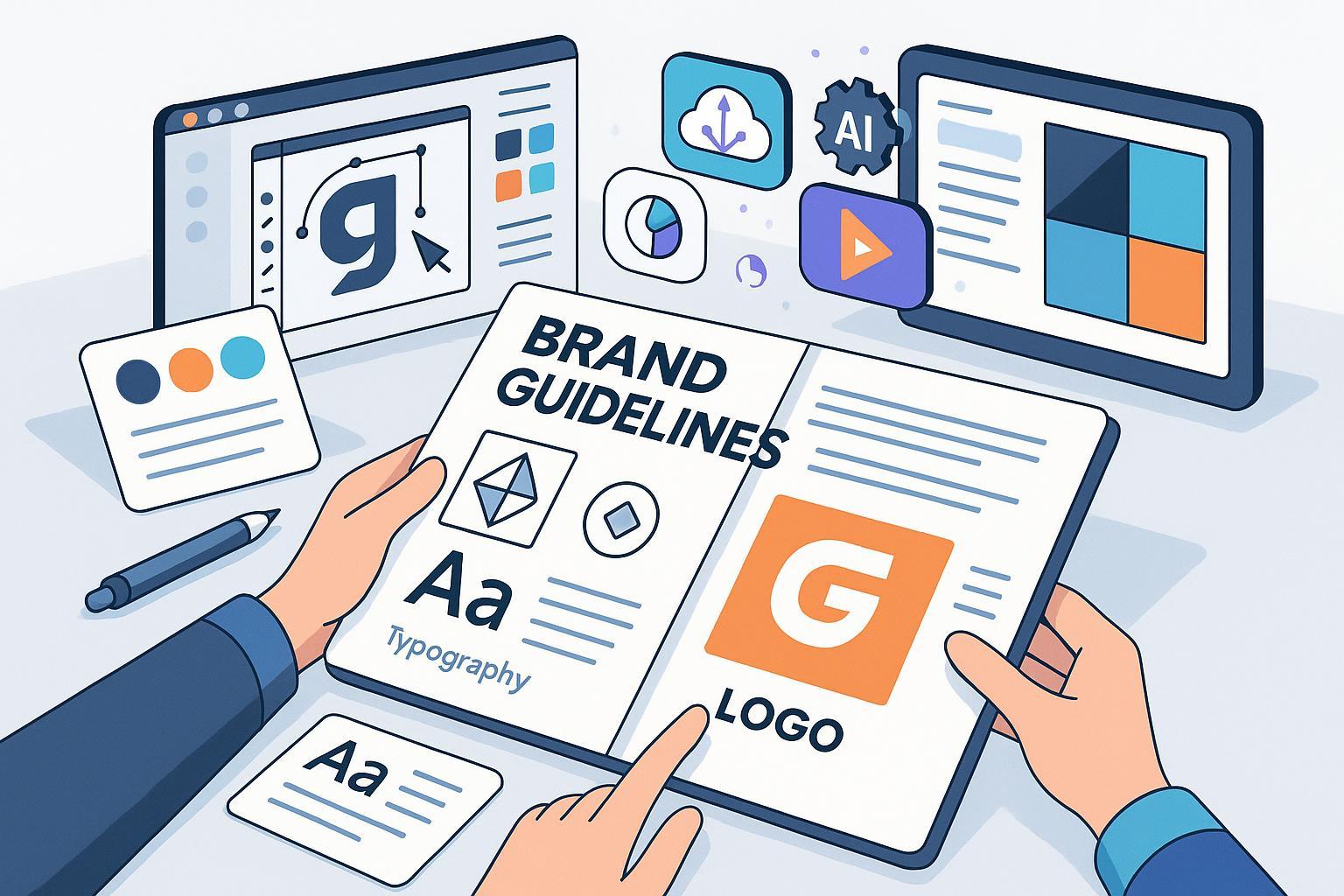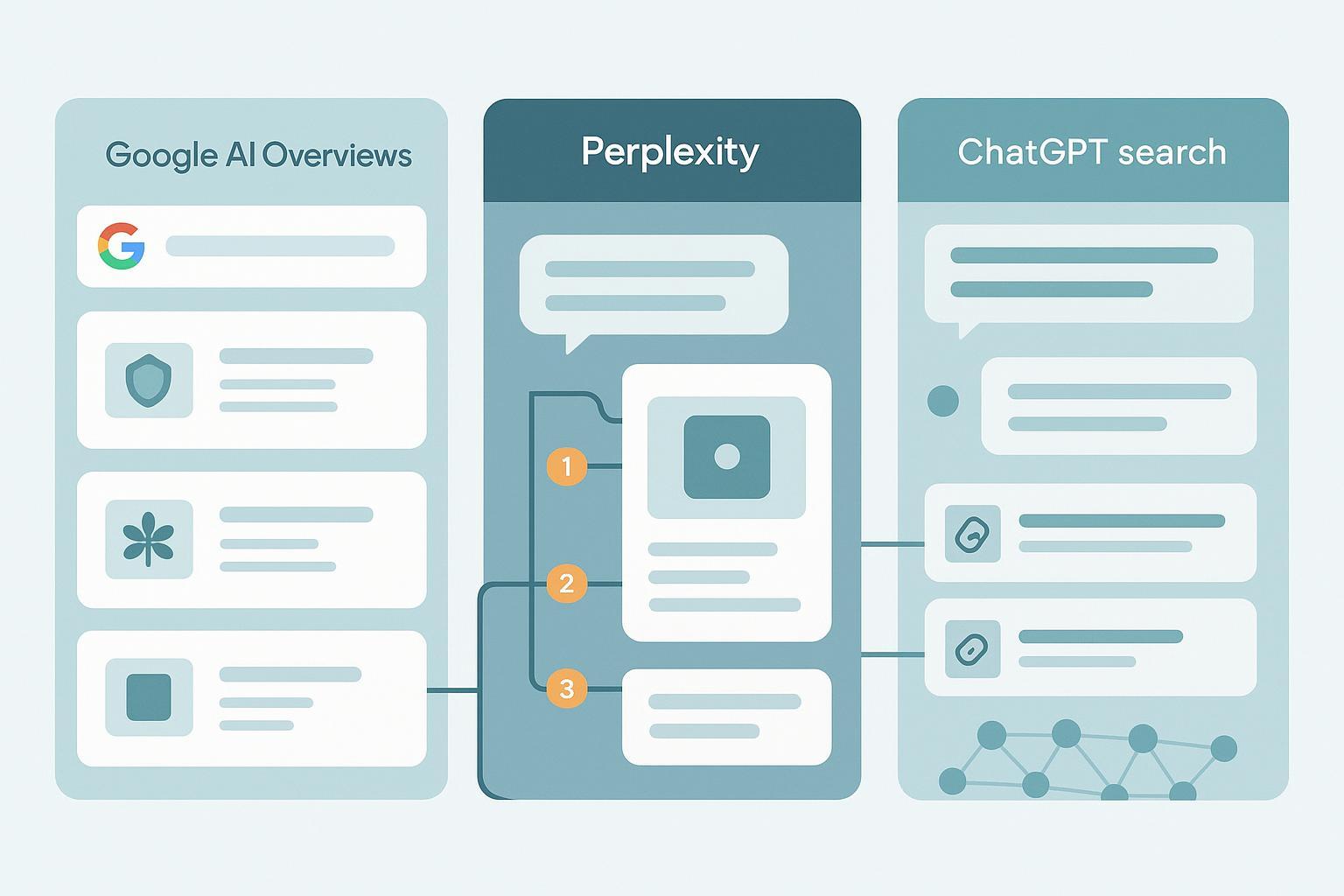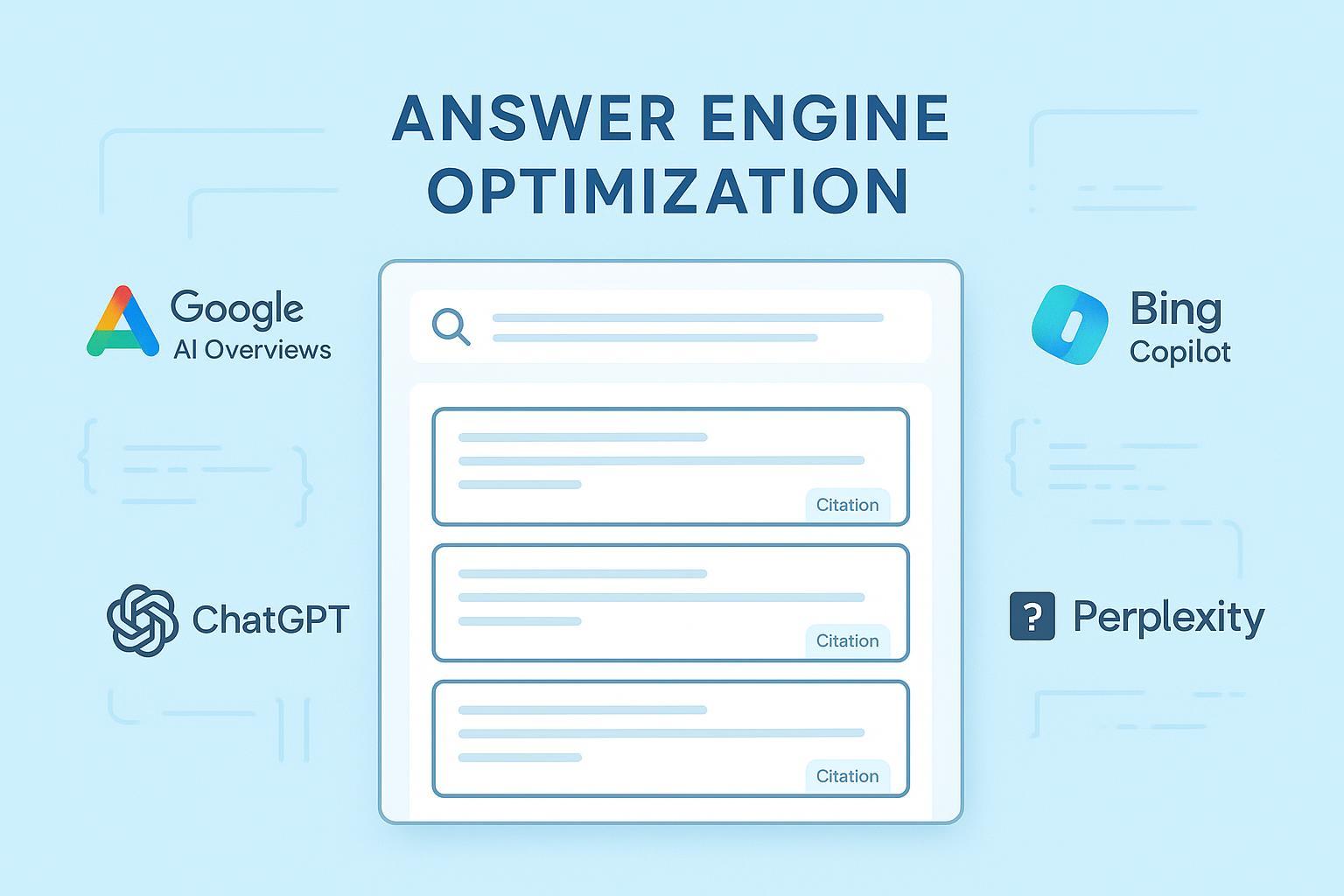Brand Guidelines Ultimate Guide: Complete, Actionable, Modern Style Guide
Discover the ultimate guide to brand guidelines—comprehensive strategies, real-world examples, and ready-to-use templates for consistent, future-proof branding. Start building now!

 Ultimate Brand Guidelines Guide Cover: People assembling a modern, digital-first brand manual with logos, colors, typography, and AI icons.
Ultimate Brand Guidelines Guide Cover: People assembling a modern, digital-first brand manual with logos, colors, typography, and AI icons.
Table of Contents
- Introduction: Why Every Brand Needs Guidelines
- What Brand Guidelines Encompass: The Core Components
- Step-by-Step: Creating Comprehensive Brand Guidelines
- Best-in-Class Examples: Analysis of Leading Brand Guidelines
- Implementation & Company-Wide Adoption
- Maintaining & Updating Your Brand Guidelines
- Toolkit & Resources Appendix
- Frequently Asked Questions (FAQ)
Introduction: Why Every Brand Needs Guidelines
Brand guidelines, also known as style guides or brand books, are the DNA of a brand’s identity. They codify the rules, assets, and principles that enable organizations to project a consistent and professional image across every channel—visual, verbal, digital, and experiential. Studies reveal that consistent brand presentation across platforms can increase revenue by up to 33%.[^1] Yet, only 30% of companies report that their guidelines are consistently applied.[^2]
Without a detailed, actionable, and accessible set of guidelines, even the most compelling brand identity can unravel into inconsistency and confusion, diluting trust and weakening market impact. This guide will show you—step by step and with leading global examples—how to build, implement, and future-proof brand guidelines that drive measurable results.
What Brand Guidelines Encompass: The Core Components
At their heart, comprehensive brand guidelines cover every aspect needed for unified expression:
1. Brand Essence & Values
- Mission & Vision: What your brand stands for, your purpose, big-picture ambitions.
- Values: The non-negotiable principles guiding behavior and decisions.
2. Visual Identity
- Logo Usage: Clear instructions, safe space, minimum size, dos/don’ts with visuals. Downloadable assets mandatory.[^3]
- Color Palette: Primary/secondary colors in multiple codes (HEX, RGB, Pantone). Contrast and accessibility checked.
- Typography: Font families, usage hierarchy, web-safe options, licensing details.[^4]
- Imagery: Photography style, iconography, illustration guides. Key images and do/don’t cases.
- Grid & Layout: Margins, alignment grids, example templates for print and digital.
- Patterns & Graphics: Decorative elements, usage context, adaptability for new channels (AR/VR, short-form video).
3. Verbal Identity
- Brand Voice: Personality traits (e.g., witty, authoritative, empathetic). Consistency guidance for all content creators.
- Tone: Adaptation rules for situation, channel, or audience segment.
- Messaging Pillars: Key phrases, value propositions, approved taglines, and prohibited language.
4. Brand Application Examples
- Multi-Channel Templates: Social, web, email, product, packaging, event, and AI/voice platforms.
- Digital Brand Kits: Centralized zip files, links, or cloud portals for easy download and distribution.[^6]
- Do’s and Don’ts: Visual and verbal brand misuse illustrations, redlines, and explanations.
- Accessibility & Inclusion: Rules for color contrast, readable font sizes, alt-text on images, and localization for diverse markets.[^7]
5. Governance & Legal
- Approval Workflows: Stakeholder engagement steps, version tracking, update protocols.
- IP & Usage Rights: Trademark, copyright guidance, co-branding, 3rd-party asset use.
- Update Cadence: Policy for scheduled reviews, emergent channel adaptation, and emergency fixes.
Infographic: Essential Elements of Brand Guidelines
Download the Brand Guidelines Checklist PDF from 4over4.
Step-by-Step: Creating Comprehensive Brand Guidelines
Building robust guidelines requires more than listing assets. It’s a structured process engaging multiple roles—and it starts well before the first page is designed.
Step 1: Brand Discovery & Audit
- Audit Existing Brand Assets: Audit visual/verbal materials in all current channels. Identify inconsistencies.
- Research: Gather market benchmarks, competitor guides, and stakeholder input. Use brand equity surveys and interviews for depth.
- Brand Essence Consensus: Facilitate workshops to define values, mission, and differentiators. Use templates like Simon Sinek’s Golden Circle for alignment.
Step 2: Stakeholder Engagement & Ownership
- Core Team Formation: Brand manager, marketing, creative, legal, and C-suite sponsors.
- Ownership Model: Define who approves, updates, and communicates guideline changes.
- Feedback Loops: Build iterative cycles with user feedback to test clarity.
Step 3: Asset Creation & Codification
- Logo/Color/Typography Design: Complete or update asset packages, including responsive/digital variants and accessibility testing.
- Voice & Messaging Playbook: Develop sample copy blocks, automated writing prompts, tone checklists.
- Template & Toolkit Design: Create downloadable, editable templates in widely accessible formats (Word, Canva, Figma). Include instructions and use-case commentary.
Step 4: Documenting the Guidelines
- Modular Structure: Break the guide into independent, easily referenced chapters.
- Visual Anchors: Every rule illustrated with an example or counterexample.
- Layered Detail: Quick-glance summaries for non-experts, in-depth explanations for brand specialists.
- Legal/IP Section: Include language on copyrights, trademarks, and co-branding.
- Update/Feedback Mechanisms: Embedded submission forms for flagging errors or improvement suggestions.
Step 5: Digital Roll-Out & Version Control
- Centralized Access: Cloud-hosted living documents enable real-time updates (e.g., Frontify, Canva for Teams).
- Version Tracking: Numbered versions, change logs, stakeholder visibility.
- Digital Toolkit: Download center, editable template links, instructional videos, and FAQ sections.
Workflow diagrams and template downloads should be sourced from available valid resources.
Best-in-Class Examples: Analysis of Leading Brand Guidelines
1. IBM
- Highlights: Modular, update-driven digital guide; downloadable asset libraries; meticulous accessibility and global adaptation focus.
- IBM Brand Center Example: available via IBM's official design language portal.
- Lessons: Periodic review, global input, and a focus on actionable, universal templates ensure relevance at scale.
2. Netflix
- Highlights: Public digital guidelines for press/partners; robust co-branding and asset access; strict do’s/don’ts.
- Netflix Brand Assets: see Netflix's brand asset site for current access.
- Lessons: Transparency, digital-first distribution, and enforceable co-branding rules lead to consistent external usage.
3. Starbucks
- Highlights: Integrates high-level philosophy (mission + culture) with concrete visual guides; immersive, web-based platform.
- Starbucks Creative Expression example: accessible through Starbucks' official platform.
- Lessons: Linking brand purpose to guidelines boosts adoption and internal alignment.
4. NASA
- Highlights: Comprehensive, open-source standards for partner co-branding; highly detailed dos/don’ts for every asset.
- NASA Graphics Standards Manual: see official NASA resources for most recent guidelines.
- Lessons: Open, downloadable, and exhaustive guidelines serve not just internal teams, but the wider partnership ecosystem.
5. Spotify
- Highlights: Clear digital asset download hub, channel-specific adaptations, visual voice and brand tone examples.
- Spotify Brand Assets: available on Spotify's developer portal.
- Lessons: Providing design files and approved templates reduces friction and increases brand consistency.
Best Practice Table: Static vs. Digital Living Brand Guidelines
| Feature | Static PDF | Digital Living Guide |
|---|---|---|
| Update Frequency | Rare | Continuous |
| Asset Access | Download only | Dynamic links, toolkits |
| Usage Tracking | None | Analytics, feedback forms |
| Multi-Channel | Limited | Comprehensive |
Implementation & Company-Wide Adoption
Creating guidelines is only half the battle. Without effective rollout and ongoing governance, even the best style guide will gather digital dust.
1. Launch Plan & Internal Communications
- Official Launch Event: Kickoff sessions, video explainers, live Q&A, and digital launch kits.
- Stakeholder Training: Interactive onboarding for all roles (marketing, design, content, leadership, vendors).
- Champions & Enablers: Designate team ambassadors (“brand stewards”) for each department to answer questions and promote adoption.
2. Digital Access, Asset Libraries, and Self-Service
- Universal Access: Centralized portal with single sign-on (SSO); mobile-friendly access for distributed teams.
- Editable Resources: Living templates and checklists users can adapt to real tasks.
- Multilingual/Multi-Brand Support: Segment or personalize guidelines for global/brand portfolio usage.
3. Monitoring Usage, Adoption & Brand Compliance
- Brand Audits: Schedule regular reviews—track brand asset compliance using digital trackers. Offer self-assessment scorecards.
- Analytics & Feedback: Track guideline downloads, usage metrics, and collect feedback for improvement.
- Celebrate Compliance: Share success stories, department highlights, and compliance badges.
4. Dealing with Brand Misuse
- Easy Reporting: Digital form for reporting guideline breaches.
- Correction Workflows: Clear, non-punitive process for fixing issues—update assets and guidelines in response to feedback.
Brand audit checklist and templates should be sourced using up-to-date, valid online resources.
Maintaining & Updating Your Brand Guidelines
Guidelines are not static—they evolve alongside your business, customer expectations, and the rapid expansion of channels and technologies.
1. Scheduled Updates & Governance
- Regular Review: Set semi-annual or annual reviews (frequency may increase during major brand pivots).
- Revision Protocols: Documented update process with stakeholder checkpoints, version control, and communication plans.
- Continuous Onboarding: Train new hires and partners as part of onboarding cycles.
2. Adapting for New Channels (AI, Social, Experiential)
- AI Guidelines: Rules for prompt design, brand mentions in AI-generated answers, and generative model asset use.
- Social Short-Form/AR: Adaptation of imagery, logo, and typography for new media and device constraints.
- Accessibility & Sustainability: Integrate evolving standards—ensure guidelines remain inclusive and responsible.
3. Iterative Feedback & Evolution
- User Feedback Forms: Enable suggestions and “pain point” flagging by users directly in the doc.
- Brand Sentiment Tracking: Leverage software tools to monitor public brand perception; iterate guidelines accordingly.
- Legal & IP Evolution: Update for new markets/laws, global partnerships, or co-branded campaigns. Include sample legal notices.
Update tracker templates should be referenced from active template providers.
Toolkit & Resources Appendix
Editable Templates & Checklists
- Brand Guidelines Template (Canva): Visit Canva's template gallery for the latest valid brand guideline templates.
- Brand Audit Checklist: See 4over4's official content resources.
- Workflow Diagram Example: Reference valid, up-to-date diagram design sources.
Digital Tools for Brand Governance
- Frontify Digital Brand Center
- Papirfly Brand Management Platform
- Canva for Teams
- Venngage Audit Templates
Further Reading and Inspiration
- 4over4 Brand Guidelines Checklist
- HubSpot: 21 Brand Style Guide Examples
- Canva: Visual Style Guide Essentials
- Lingo: Developing Brand Guidelines
Frequently Asked Questions (FAQ)
Q1: How often should brand guidelines be reviewed and updated?
At least once per year, and after major rebrands, new product launches, or adding significant new channels. Build regular updates into your core brand management workflow.
Q2: What should be included in a digital brand guidelines portal?
Modular chapters, downloadable assets, usage tracking tools, feedback forms, and instructional videos—plus role-based access when needed.
Q3: How do I ensure agency and partner compliance?
Supply downloadable, enforceable templates; require agency onboarding; implement co-branding/IP sections; and maintain a clear reporting/feedback loop.
Q4: How should guidelines adapt to AI and generative platforms?
Explicit prompts/examples for correct brand mentions; visual/voice asset adaptation rules; legal rights and disclosure procedures for AI-generated content.
Q5: What’s the biggest pitfall to avoid?
Creating overly complex or static guides that no one reads or uses! Focus on usability, accessibility, and regular updates with user feedback.
Conclusion: Future-Proofing Brand Consistency
With digital and AI-driven channels multiplying, brand guidelines must now serve as living, adaptive frameworks—guiding not just designers, but marketers, writers, legal teams, and partners. By following this guide’s strategic, detailed, and practical approach, you’ll:
- Protect and enhance brand value and recognition
- Enable teams to operate with confidence and clarity
- Ready your brand for the next evolution of technology and market expectations
Download the full Ultimate Brand Guidelines Toolkit. Start building, implementing, and scaling your brand’s ultimate guide today!
References & Citations
[^1]: Papirfly, Brand Consistency Data [^2]: WiserNotify, Brand Guidelines Adoption Report [^3]: IBM Design Language [^4]: Google Fonts Licensing [^5]: Brand Voice Explained [^6]: Frontify Digital Brand Centers [^7]: W3C Accessibility Standards [^8]: Venngage Editable Templates [^9]: Shopify Internal Brand Launch [^10]: Lingo Brand Asset Libraries [^11]: AI Inclusion in Brand Guidelines





